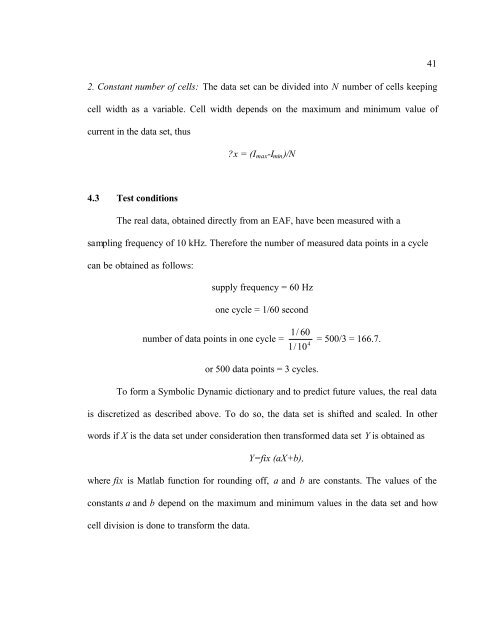symbolic dynamic models for highly varying power system loads
symbolic dynamic models for highly varying power system loads
symbolic dynamic models for highly varying power system loads
Create successful ePaper yourself
Turn your PDF publications into a flip-book with our unique Google optimized e-Paper software.
41<br />
2. Constant number of cells: The data set can be divided into N number of cells keeping<br />
cell width as a variable. Cell width depends on the maximum and minimum value of<br />
current in the data set, thus<br />
?x = (I max -I min )/N<br />
4.3 Test conditions<br />
The real data, obtained directly from an EAF, have been measured with a<br />
sampling frequency of 10 kHz. There<strong>for</strong>e the number of measured data points in a cycle<br />
can be obtained as follows:<br />
supply frequency = 60 Hz<br />
one cycle = 1/60 second<br />
1/ 60<br />
number of data points in one cycle =<br />
4<br />
1/10<br />
= 500/3 = 166.7.<br />
or 500 data points = 3 cycles.<br />
To <strong>for</strong>m a Symbolic Dynamic dictionary and to predict future values, the real data<br />
is discretized as described above. To do so, the data set is shifted and scaled. In other<br />
words if X is the data set under consideration then trans<strong>for</strong>med data set Y is obtained as<br />
Y=fix (aX+b),<br />
where fix is Matlab function <strong>for</strong> rounding off, a and b are constants. The values of the<br />
constants a and b depend on the maximum and minimum values in the data set and how<br />
cell division is done to trans<strong>for</strong>m the data.
















